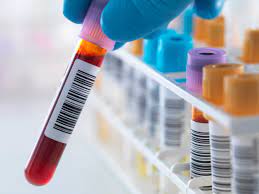A normal blood sodium level

A normal blood sodium level is 135 – 145 mmol/L.
- A low sodium is called hyponatraemia: defined as a sodium level below 135 mmol/L. This is common and affects 15-20% of people admitted to hospital
- A high sodium is called hypernatraemia: defined as a sodium level above 145 mmol/L.
Note. The normal range for sodium levels may vary slightly between labs.
Why do high and low sodium levels matter?
- High sodium levels cause cells to shrink, especially in the brain
- Low sodium levels cause cells to swell, especially in the brain.
Both of these situations are serious; as they can lead to confusion and drowsiness, and eventually coma, seizures and death.
Both are treatable, so these complications can be prevented.
What is sodium?
Sodium is a vital mineral that the body (and especially the brain) needs to work properly. Hence the levels are tightly controlled in the blood.
Sodium is found in most foods. The most common form of sodium is sodium chloride (or table salt).
The sodium test is usually done as part of a U+E blood test. This also measures the levels of potassium (another mineral) and waste products (urea and creatinine) in the blood.
Your blood sodium level represents a balance between the sodium and water in the food and drinks you consume – and the amount in your urine. A small amount is lost through stool and sweat.
Causes of high sodium level (hypernatraemia)
Commoner causes
- Too little water in the body (dehydration) – increased fluid loss due to infection/sepsis, excessive sweating, diarrhoea, or burns
- Medication (the commonest cause) – e.g. corticosteroids, laxatives, lithium, NSAIDs (ibuprofen or naproxen) and diuretics.
Rarer causes
- Overactive adrenal gland (hyperaldosteronism) – e.g. Cushing’s or Conn’s syndrome
- Diabetes insipidus (type of diabetes in which kidneys are not able to conserve water).
Causes of low sodium level (hyponatraemia)
Commoner causes
- Too much water in the body (over-hydration; commonest cause) – e.g. heart failure, certain kidney diseases, or cirrhosis of the liver
- Medication – e.g. diuretics (yes, diuretics can cause a high or low sodium, usually low), morphine, proton pump inhibitors (PPI) and selective serotonin reuptake inhibitor (SSRI) antidepressants.
Rarer causes
- Underactive adrenal gland (hypoadrenalism) – e.g. Addison’s disease
- Increased fluid loss from body (e.g. vomiting or diarrhoea)
- Syndrome of inappropriate antidiuretic hormone secretion (SIADH) – antidiuretic hormone (ADH) is released in abnormal amounts or from an abnormal place in the body. ADH is made by the pituitary gland
- Underactive thyroid gland (hypothyroidism).
Note. There may be more than one cause of a high or low sodium. All causes will need to be addressed to treat it.
Treatment of high or low sodium levels
This is complicated. The primary thing is to ascertain the cause and remove that. The treatments of the many causes of a high and low sodium level are different.
But treatment often involves: a. manipulating sodium/water intake and b. stopping (or reducing the dose of) a medication, which is often the cause (or contribution to) – e.g.
- For a low sodium – restrict fluid intake; and stop/reduce diuretic, SSRI, PPI
- For a high sodium – give fluids (water oral or NG), or 5% dextrose via an IV drip; and stop/reduce steroids.
One basic principle of treating either high or low sodium, is to bring the level down (or up) slowly.
Summary
We have described what is a normal blood sodium level; and the causes and treatment of a high or low sodium. We hope it has been helpful.
Other resources
High sodium (hypernatraemia) review article (Sonani, 2023)
Low sodium (hyponatraemia) article article (Rondon, 2023)

